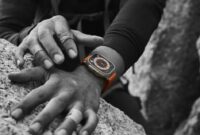Personalized spatial audio is one of the new iOS 16 features, which was once more highlighted at Apple’s event on Wednesday. Beginning on September 12, you’ll be able to design a unique sound profile for your iPhone once you’ve updated to the newest version of iOS. This should enhance the sense of immersion and overall spatial audio experience you get from AirPods.
Apple scans your ears using the front-facing TrueDepth camera on the iPhone to create this custom tuning. Under a minute is required for the procedure, which entails holding your iPhone 10 to 20 centimeters from the side of your head. The information obtained is then utilized to enhance spatial audio for your particular ear shape. Apple’s Mary-Ann Rau stated during the keynote that “the way we all perceive sound is unique, based on the size and shape of our head and ears.” The most immersive listening experience is provided by “personalized spatial audio,” which precisely places sounds in space that are tailored particularly for you.
Apple isn’t the first business to take this route, either. Since the beginning of 2019, Sony has made “personalized 360 Reality Audio” available for supported music services like Amazon Music, Tidal, Deezer, and Nugs.net. From a conceptual standpoint, Sony and Apple are working to identify your ear shape and modify spatial audio processing to take into consideration the distinctive folds and contours of your ears. The aim is to keep that 3D audio experience and get rid of any audio flaws that make it less immersive.
With the help of Kaz Makiyama, vice president of video and sound at Sony Electronics, I was given the following benefits explanation by Sony back in June:
However, Sony’s strategy is a little bit more problematic than Apple’s. The iOS settings already include the AirPods method. However, using the Headphones Connect app and the phone’s camera, you must take a real snapshot of each ear in order to create a customized sound field with Sony’s goods.
After being sent to Sony’s servers for examination, the photos are kept there for a further 30 days so that Sony can use them for internal research and feature upgrades. The business claims that at this time, the ear photos are not individually connected to you.
Apple has never asserted that their use of customized spatial audio marks any firsts. Even though others—in this case, Sony—were already working in that direction, the company’s management have frequently indicated that their objective is to come up with the greatest execution of meaningful features.



